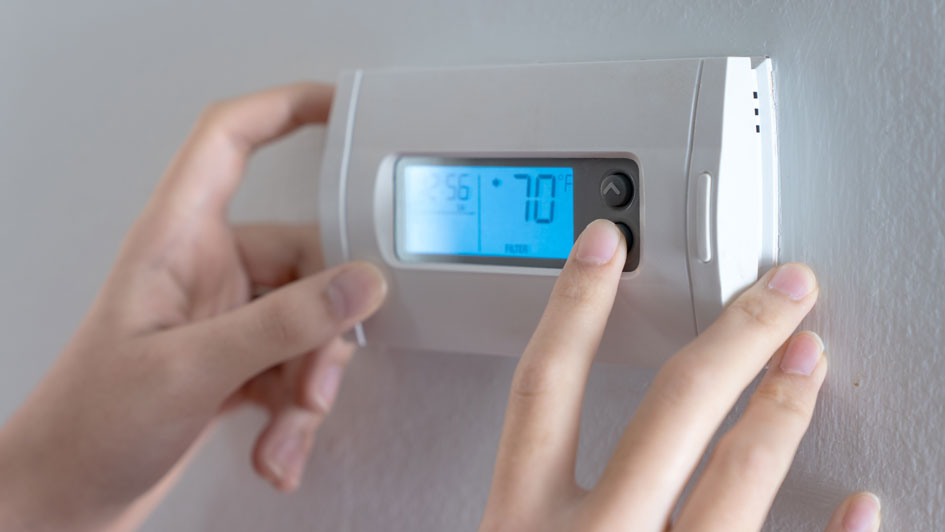
It's always nice when we manage to save money on our utility bills, but it turns out there’s a way to lower energy use, even when you're not even home.
It starts with your thermostat. By learning more about its special features and settings, you can structure its daily schedule around your personal preferences. This means establishing various temperature settings for when you’re at home, away or even when you’re asleep.
By trying a few of these schedules, you'll be able to enjoy comfortable temperatures while keeping more money in your pocket. Check out our guide on how your thermostat can be a source of energy savings:
While at Home
Whenever you're at home, you want comfortable temperatures. It's only natural to want your thermostat lower in the summer while you are in the house to make the most of the cool air.
But in terms of energy efficiency, the best range for when you're in your home during the summer is actually around 78 and 80 degrees Fahrenheit. This way, you can stay cool while still keeping your energy bills low.
While Gone
When setting the temperature for a vacation or other trip away from the house, the majority of homeowners will set the thermostat higher for while they're gone.
Depending on the local climate or your home's location, you can set the thermostat to higher temperatures like 88 degrees while no one is home before lowering it back to the sweet spot of 78-80 degrees when you or a family member return. This way, your air conditioning won't have to work constantly to keep an empty house cool.
While Sleeping
When it comes to sleeping in the summer, you want a nice cool temperature. A good rule of thumb is between 68-72 degrees Fahrenheit. This will keep you from getting too hot or too cold when you are trying to get some rest.
Additional Ways to Reduce Energy Use:
- Put in a smart thermostat: Trying a smart thermostat in the summer is an excellent way to reduce energy costs by automatically adjusting to your lifestyle and home environment. It'll take care of making changes while you are home or sleeping, before allowing it to get warmer when no one is home. With models like the Lennox iComfort, you can adjust the temperature remotely through your smartphone, tablet or laptop. Planning smart thermostat installation in your Hendersonville home is an effortless way to set the correct temperature no matter where you are.
- Upgrade your HVAC system: Upgrading your HVAC system saves money right from the start. With greater energy efficiency, lower utility bills won't be far behind since it requires less energy to reach your preferred temperatures. Air conditioning installation in Hendersonville is a great way to beat the heat in the summer.
- Keep up with AC maintenance: Whether or not you keep up with regular air conditioning maintenance in Hendersonville can have a serious effect on your total monthly energy use. If you stay on top of cleaning key components like the coils, checking for damage and clearing air vents of dust and debris, you may notice your HVAC system run more efficiently. Higher energy efficiency will also reduce strain on important or delicate components and lowers operational costs, lowering total energy use and eventually the total monthly bill.
- Replace your air filter regularly: Cleaning or replacing the air filter regularly saves money by helping air flow efficiently through your air conditioner. When filters are clogged with dirt and debris, air conditioners have to work harder, and the strain can reduce the system’s life span and cause breakdowns.
- Verify your attic has enough insulation: Insulation is a crucial component for any energy-efficient home, securing the hot air outside and the cool air inside through summer. The North American Insulation Manufacturers Association (NAIMA) recommends that homes in the southern United States should have at least 13-14 inches of insulation, while colder climates do better with 16-18 inches.
- Inspect your ventilation: Leaky ductwork can raise your energy bills much more than 20 percent, plus it can also lead to problems with your water heater, clothes dryer and other appliances throughout your home. Finding any leaks fast and sealing them can address both concerns.
- Seal all other leaky spots in your home: Sealing up other leaks in your home with caulk, foam sealant or weather-stripping keeps temperatures a little cooler on hot summer days. You should also check for any gaps around windows, doors and even outdoor fixtures. Making time to seal leaks now can help you save a lot in the long term.

